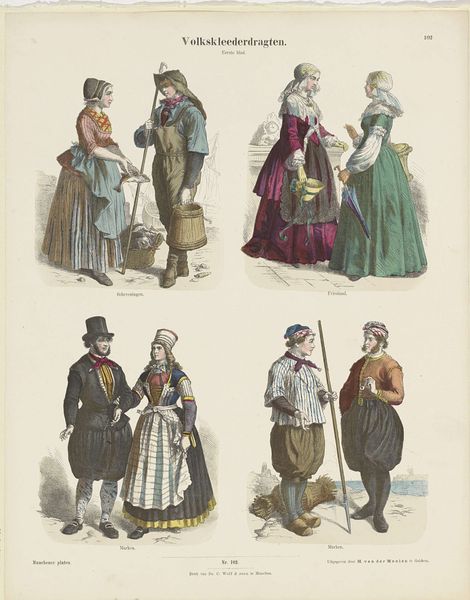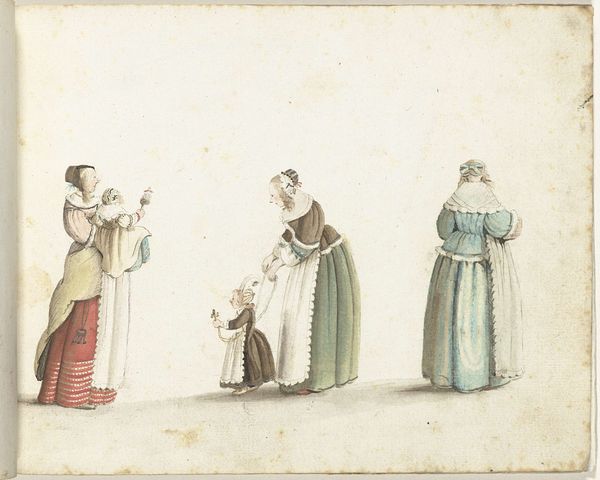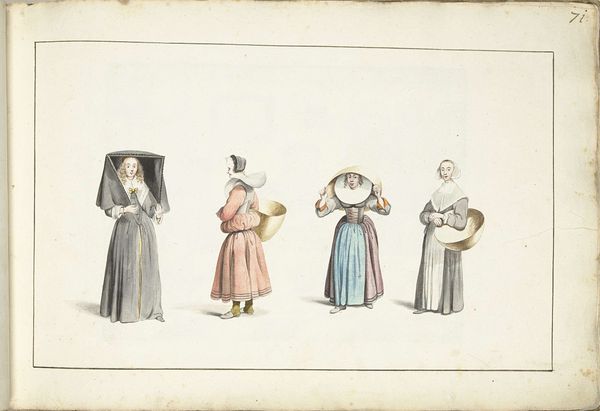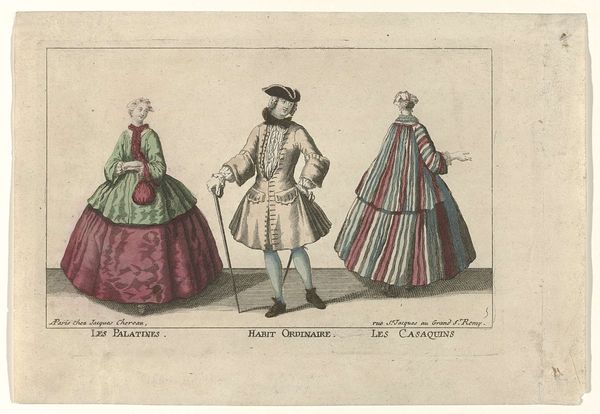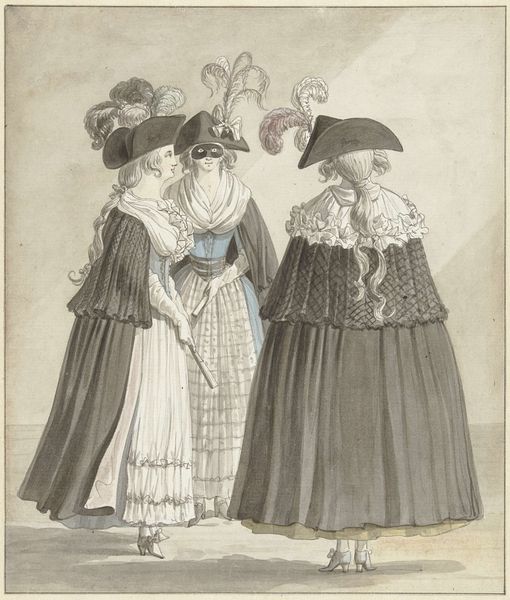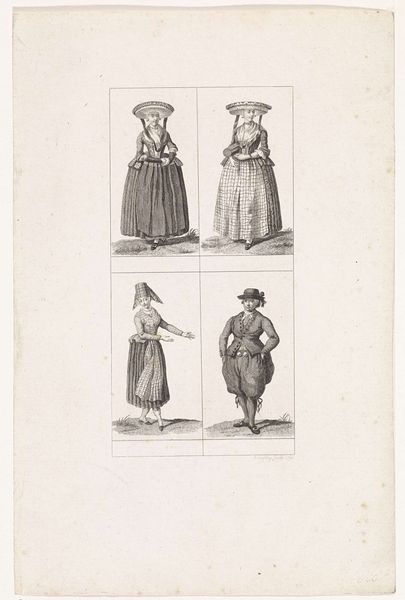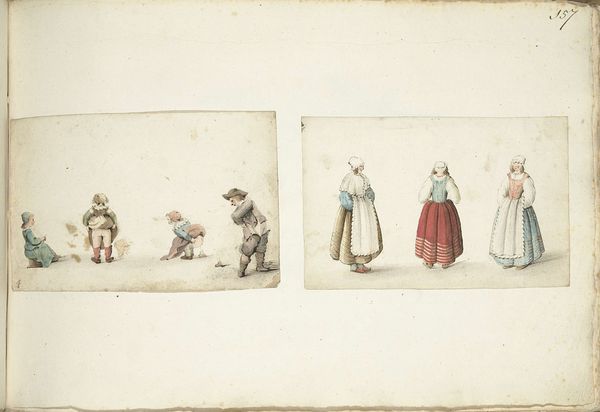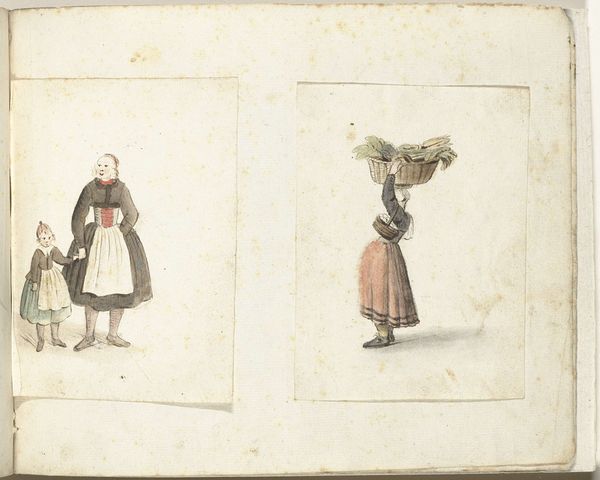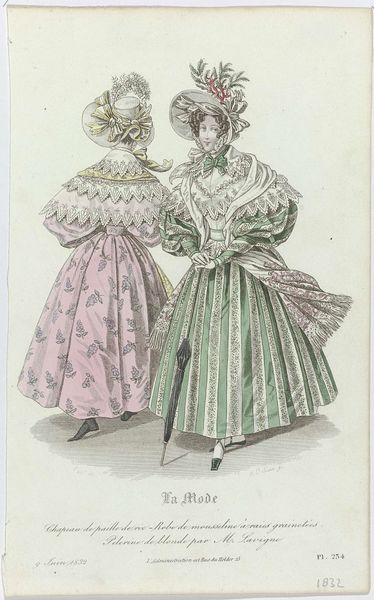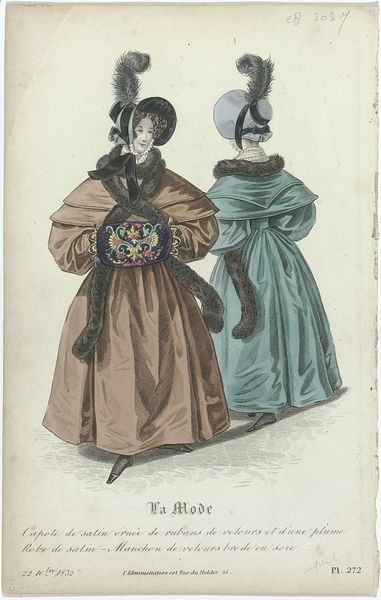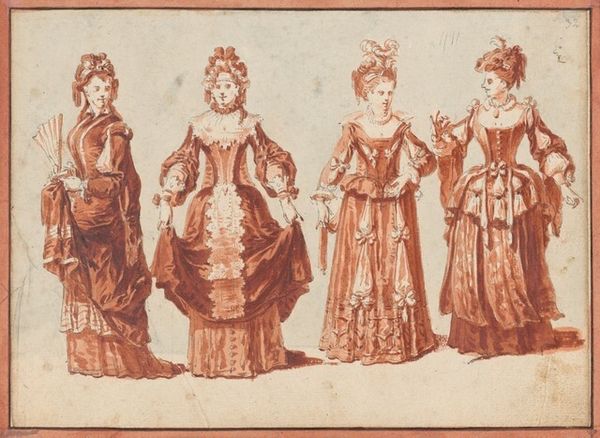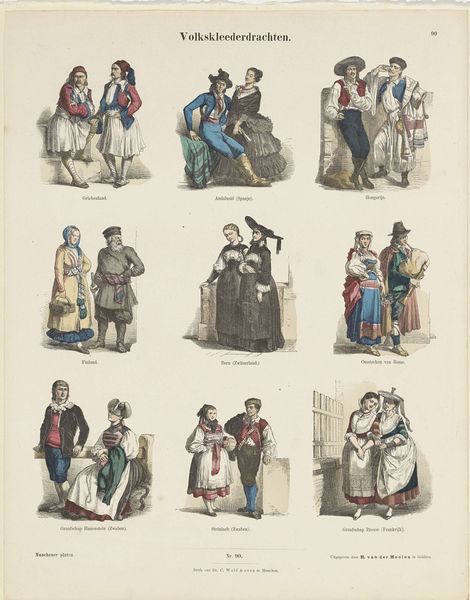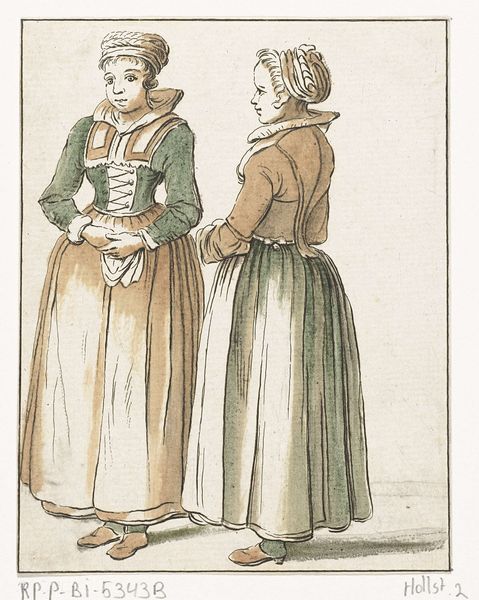
drawing, painting, paper, watercolor
#
portrait
#
drawing
#
dutch-golden-age
#
painting
#
paper
#
watercolor
#
historical fashion
#
watercolour illustration
#
genre-painting
Dimensions: height 102 mm, width 159 mm
Copyright: Rijks Museum: Open Domain
Curator: Welcome to the Rijksmuseum. Here, we’re looking at Gesina ter Borch’s “Drie staande vrouwen,” a watercolor and pen drawing on paper from around 1646 to 1654. Editor: Immediately, I'm struck by the linearity. The simplicity of the composition lends itself to a fascinating study in form and the subtle color relationships. It’s all very contained and poised. Curator: Yes, and I think that containment speaks volumes about the position of women in 17th-century Dutch society. The detail in their garments hints at the labor involved in creating and maintaining clothing. Their attire would have signaled their status, both economic and social, within their communities. Editor: Agreed. Look at the texture and details in their clothing. Ter Borch masterfully captures the nuances of fabric, the play of light on the folds, creating a satisfying visual experience. The muted tones create harmony. The positioning and color create interesting mirroring and separation within the space. Curator: Absolutely, and considering that women were primarily responsible for textile production and clothing upkeep within the household, the emphasis on clothing emphasizes labor distribution within the community. What does their similar posture mean in regard to individual expression? Are they individuals, or types of women in their moment? Editor: The slight variations invite closer observation, making the composition less static. Though these aren't conventional portraits, and we could interpret them as depictions of 'types,' it is tempting to see hints of personality in each face. Their subtle uniqueness emerges. Curator: I concur. Although these may represent general figures or models showcasing attire, the specificity with which she portrays these details may provide a lens through which we might understand and validate women and the range of material labors that helped support the pre-industrial economy. Editor: This small study gives us the space to ask what these individual expressions were, as expressed by line, shape and color. The material and its application offers this freedom to read, interpret, and respond in our time. Curator: A pertinent point. Viewing the artwork now reminds us of how vital this form of creative depiction was in recognizing labor within domestic circles. Editor: Indeed. It serves as an encouragement to be aware of material conditions, as interpreted by Gesina ter Borch.
Comments
No comments
Be the first to comment and join the conversation on the ultimate creative platform.
